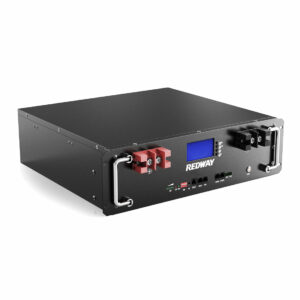What is the meaning of battery rack?
Battery racks are structural frameworks designed to organize, secure, and manage multiple battery modules in large-scale energy storage systems (ESS). They standardize installation in data centers, renewable energy storage, and telecom sites while enabling scalability, thermal management, and safety compliance. Modern racks integrate lithium-ion modules with Battery Management Systems (BMS), cooling mechanisms, and fire suppression to optimize energy density and operational lifespan.
What defines a battery rack?
A battery rack combines mechanical support, electrical connectivity, and thermal control for clustered battery modules. Key features include standardized 19-inch or 42U server rack dimensions, modular stacking, and compatibility with lithium-ion/NiCd chemistries. Advanced models offer liquid cooling and fire-resistant enclosures for industrial applications.

Battery racks are engineered for high-density energy storage, typically housing 10–50 modules per rack. Voltage ranges span 48V (telecom) to 800V (utility-scale ESS), with 19-inch server racks being the industry standard for data centers. Pro Tip: Always leave 10–15% vertical space in racks for airflow—overpacking reduces cooling efficiency by 30–40%. For example, a solar farm ESS might use 72V racks with LiFePO4 modules, each rack delivering 20kWh. Transitioning from lead-acid, lithium racks cut footprint by 60% while doubling cycle life. But how do you prevent cell imbalance? Integrated BMS layers monitor individual modules, redistributing load during charge/discharge.
What are the main types of battery racks?
Three primary battery rack types dominate: server racks (19-inch), modular expandable racks, and liquid-cooled racks. Server racks suit data centers, while modular designs allow incremental capacity upgrades. Liquid-cooled variants manage high heat in fast-charging EV stations or hyperscale ESS.
Server racks prioritize compatibility with existing data center infrastructure, supporting 42U heights and front/back airflow. Modular racks use slide-out trays for easy maintenance, ideal for telecom sites requiring minimal downtime. Liquid-cooled racks employ cold plates or dielectric fluid immersion, slashing thermal stress during 2C+ charging. Practically speaking, a 48V telecom rack might store 15kWh using LiFePO4, whereas a 400V liquid-cooled rack in a EV depot holds 300kWh. Pro Tip: Choose racks with UL 1973 certification—non-compliant units risk thermal runaway in confined spaces. Transitional designs now blend air-liquid hybrid cooling, cutting energy use by 25% versus pure liquid systems.
| Type | Applications | Cooling Efficiency |
|---|---|---|
| Server Rack | Data Centers | Air (0.5–1 kW/rack) |
| Modular Rack | Telecom/Industrial | Air (0.3–0.8 kW/rack) |
| Liquid-Cooled | EV Charging/Utility ESS | Liquid (2–4 kW/rack) |
What are the key components of a battery rack?
Battery rack components include the frame, sliding modules, BMS, cooling fans/ducts, circuit breakers, and communication ports. High-end racks add smoke detectors, firewalls, and emergency shutdown buttons to meet NFPA 855 safety standards.
The frame, usually steel or aluminum, must withstand 1.5x the system’s weight for seismic stability. Slide-out battery modules simplify replacements—Tesla’s Megapack uses 23kWh modules with quick-connect terminals. Beyond physical parts, the BMS monitors voltage/temperature per module, balancing cells via passive/active circuits. For example, a data center rack might integrate 20x 5kWh Li-ion modules, a central BMS, and dual cooling fans. Pro Tip: Use fire-rated cable trays—standard nylon ties melt at 150°C, risking short circuits during thermal events. Transitionally, some racks now include AI-driven predictive maintenance, flagging cell degradation 30% earlier than threshold-based systems.
Where are battery racks commonly used?
Battery racks are deployed in data centers (48V backup), solar/wind farms (600V+ ESS), telecom towers (24–72V), and EV charging hubs. They’re also critical for UPS systems in hospitals and airports requiring 99.999% uptime.
In data centers, racks provide N+1 redundancy—if one module fails, others compensate without downtime. Solar farms use rack clusters for time-shifting energy, storing daytime generation for nighttime grid injection. Telecom sites prioritize compact 19-inch racks with 10–20kWh capacity, often paired with diesel generators. But what about harsh environments? Offshore wind installations use IP65-rated racks with anti-corrosion coatings. Pro Tip: Deploy racks with modular inverters—dedicated per-rack conversion improves efficiency by 5–7% versus centralized setups.
| Industry | Voltage | Capacity/Rack |
|---|---|---|
| Data Centers | 48V | 10–30kWh |
| Solar ESS | 400–800V | 200–500kWh |
| Telecom | 24–72V | 5–20kWh |
What safety standards apply to battery racks?
Battery rack safety mandates UL 1973 (stationary ESS), IEC 62619 (industrial), and NFPA 855 (fire codes). These enforce fire resistance, seismic bracing, and emergency disconnect features. EU racks also require CE marking and UN38.3 transport certification.
UL 1973 tests racks for explosion risks under 2x rated current, while NFPA 855 restricts energy density to 600 kWh/m² in occupied spaces. IEC 62619 mandates IP54 ingress protection for outdoor racks. For instance, a UL-certified 48V rack undergoes 20+ abuse tests, including short-circuit and overcharge simulations. Pro Tip: Install smoke detectors within 1m of racks—early detection reduces fire spread risk by 90%. Transitionally, some insurers now demand NFPA compliance for ESS coverage, rejecting DIY or uncertified racks.
How do battery racks differ from traditional battery systems?
Battery racks offer modularity, scalability, and centralized management absent in standalone lead-acid setups. Traditional systems use loose batteries wired in series/parallel, complicating maintenance and lacking unified BMS oversight.
Racks standardize connections via busbars, reducing wiring errors by 70%. They also enable hot-swapping—replace a faulty module without shutting down the entire ESS. A telecom site upgrading from lead-acid to rack systems might shrink its battery room from 20m² to 8m². But why not stick with traditional? Rack-based BMS prevents cell overvoltage, a common cause of lead-acid failure. Pro Tip: Retrofitting old battery rooms? Check floor load capacity—lithium racks weigh 50% less but need reinforced flooring for seismic zones.
RackBattery Expert Insight
FAQs
Can battery racks replace existing lead-acid setups?
Yes, but verify voltage compatibility—48V lithium racks often need a DC-DC converter if replacing 48V lead-acid. Consult floor plans for size/weight differences.
Are battery racks fireproof?
No, but UL 1973-certified racks include firewalls and vents to delay flame spread. Always pair with room-level smoke/heat detectors.
How long do lithium battery racks last?
8–15 years, depending on cycles. LiFePO4 racks endure 6,000+ cycles at 80% DoD—triple lead-acid’s lifespan.



